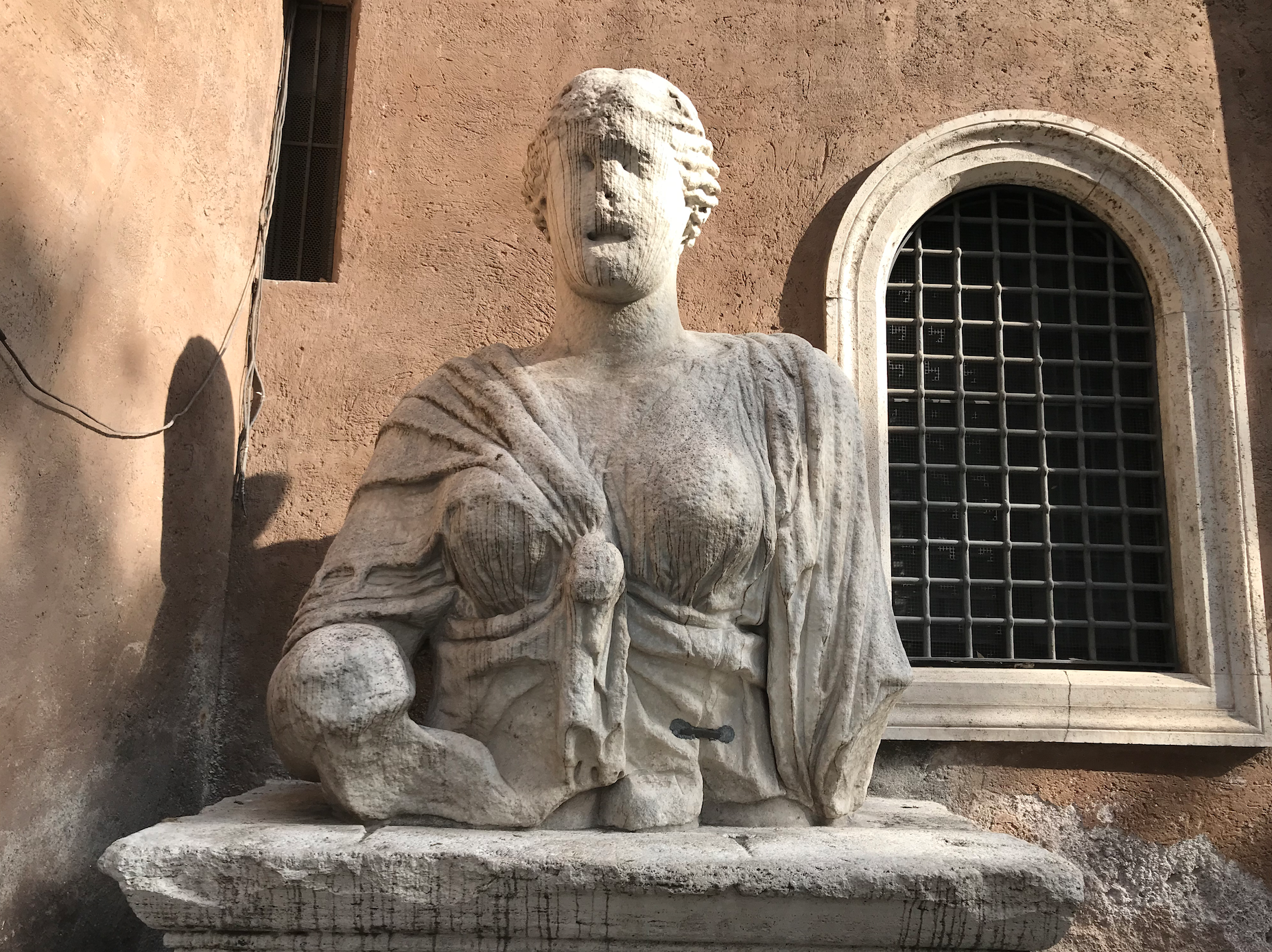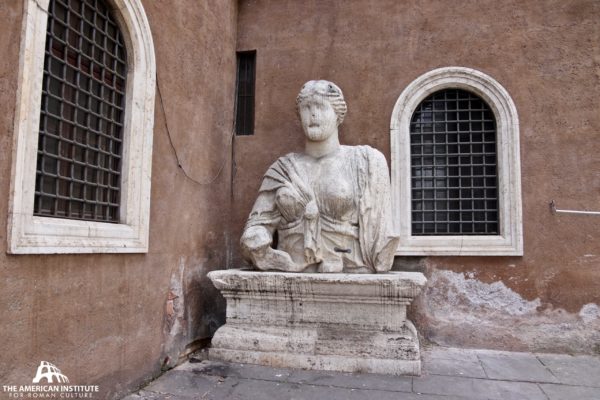Start with our video overview:
This colossal statue, identified as Isis by the knot of clothing between her breasts, is one of Rome’s five “talking” statues.
Originally statue has been interpreted as belonging to the monumental the Iseum of the Campus Martius, possibly as a cult statue. She and four other statues were later set up in the city in public spaces and by the 16C were “Pasquinos” pronouncing in attached written satires and poems “pasquinades” lampooning the papal government. Anonymity gave the author the opportunity to post funny, vicious statements without fear of reprisal. Madama Lucrezia, whose bust stands almost 3 meters high in the Piazza of S. Marco, is the only female statue of the five “talking” statues.
Explore further:
This content is brought to you by The American Institute for Roman Culture, a 501(C)3 US Non-Profit Organization.
Please support our mission to aid learning and understanding of ancient Rome through free-to-access content by donating today.
Cite This Page
Cite this page as: Darius Arya, The American Institute for Roman Culture, “Madame Lucrezia” Ancient Rome Live. Last modified 05/26/2020. https://ancientromelive.org/madame-lucrezia/
License
Created by The American Institute of Roman Culture, published on 10/24/2019 under the following license: Creative Commons: Attribution-NonCommercial-ShareAlike. This license lets others remix, tweak, and build upon this content non-commercially, as long as they credit the author and license their new creations under the identical terms. Please note that content linked from this page may have different licensing terms.




